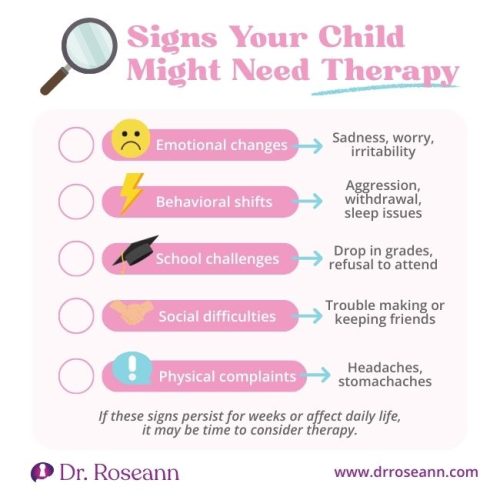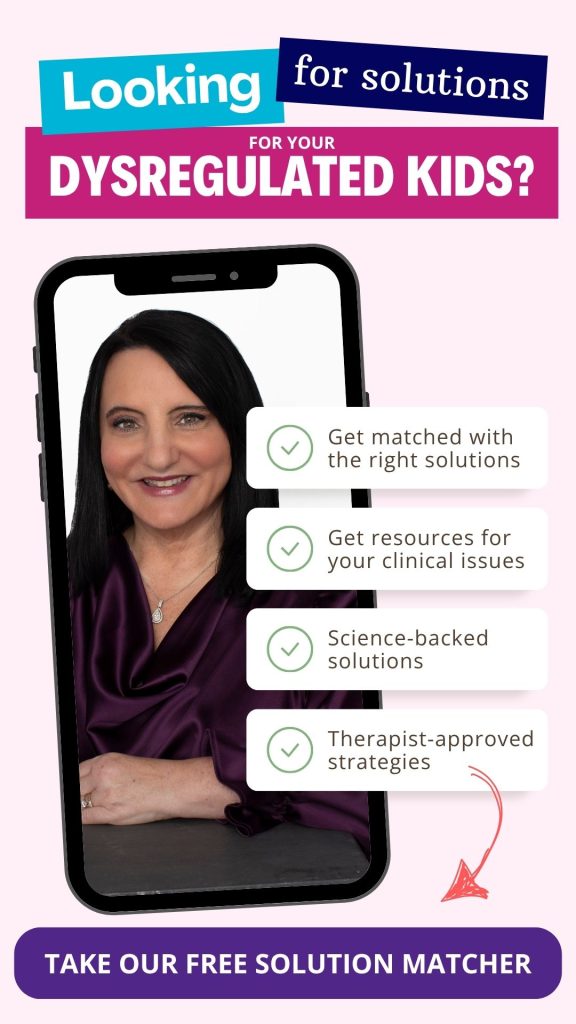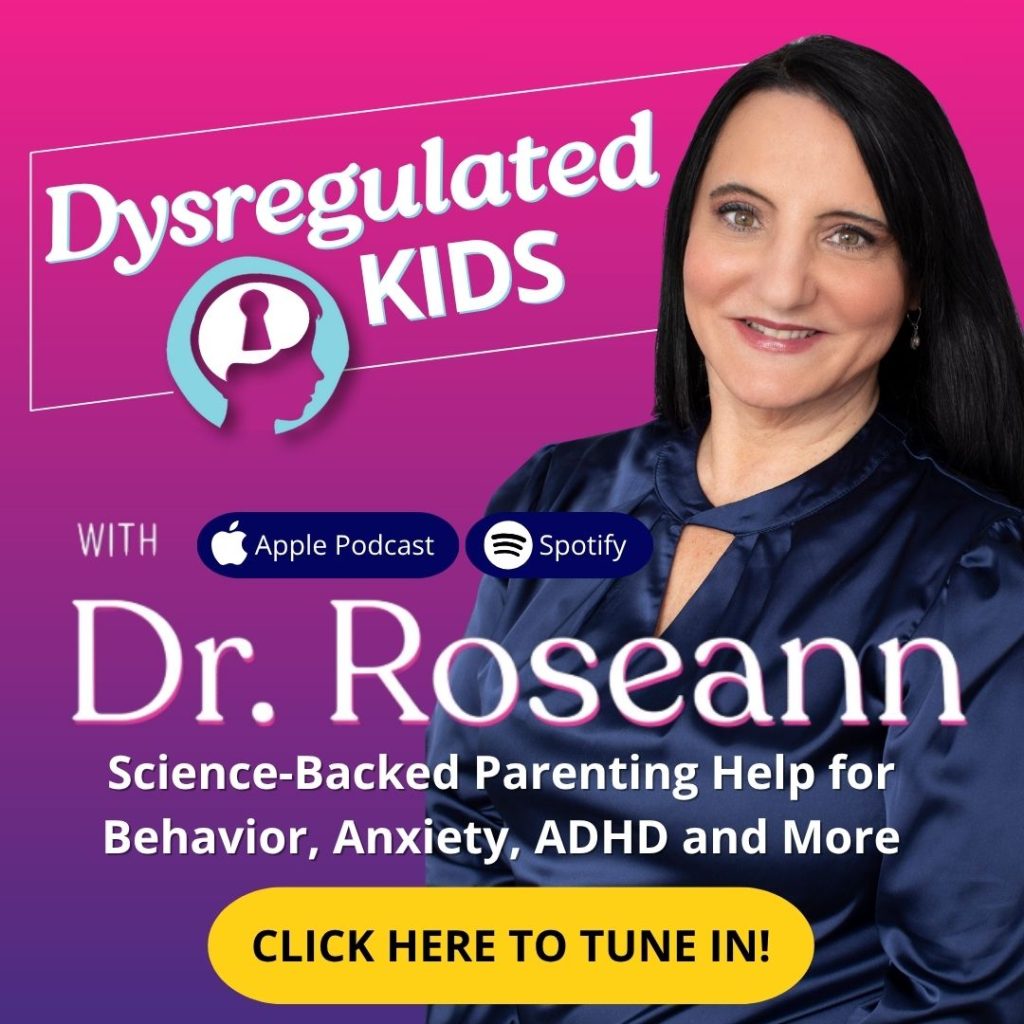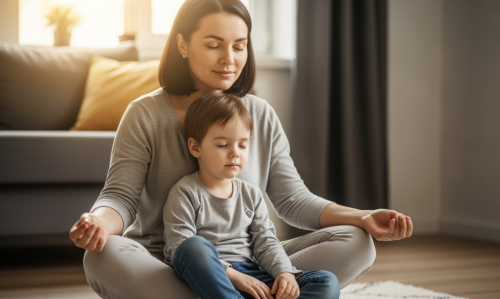Estimated reading time: 12 minutes
Ever catch yourself thinking, “What kind of therapy will actually help my child?” I hear that question nearly every week from parents who feel worn down by meltdowns, sleepless nights, or constant school calls.
The exhaustion stacks up like laundry you can never quite finish—and who wouldn’t feel overwhelmed by that? Please hear me when I say this: you didn’t cause this, and you’re not alone.
What many see as “bad behavior” is often really dysregulation—a brain that’s running on overload without enough rest stops. When we look at it through that lens, the behavior suddenly makes sense.
Behavior is communication. It’s not misbehavior. It’s a signal that the brain needs help calming down.
Here’s the hopeful piece I want you to hold onto:
There are effective child therapy options that don’t just cover up daily struggles. These approaches teach the nervous system how to slow down, regulate, and recover—because when we calm the brain first, everything else follows.
This guide is your parent-friendly roadmap to trusted therapies—from short-term intensive programs to CBT, DBT, play therapy, and family counseling—so you can take the next best step for your child.
Key Takeaways
- Therapy helps kids calm their nervous system and build lasting coping skills.
- Different providers (psychologists, psychiatrists, counselors, OTs) play unique roles in care.
- School-based services can supplement therapy and provide daily support.
- Parents strengthen progress by modeling calm and practicing skills at home.
- Options range from short-term intensive therapy to long-term ongoing support.
- CBT, DBT, play therapy, and family therapy all address different needs.
- Early intervention makes conditions like grief, trauma, anxiety, and depression easier to manage.
- The “right” therapy depends on your child’s age, needs, and personality.

Signs Your Child Might Need Therapy: What to Look For
As parents, it can be hard to tell the difference between normal ups and downs and signs that your child may need professional help. Every child has big feelings, but when those emotions start to interfere with daily life, it may be time to consider therapy.
Common indicators include:
- Emotional changes: Persistent sadness, frequent tearfulness, irritability, or extreme worry.
- Behavioral shifts: Sudden aggression, withdrawal from friends, or changes in sleep or eating habits.
- School challenges: Declining grades, refusal to go to school, or trouble focusing.
- Social difficulties: Struggling to make or keep friends, avoiding social activities.
- Physical complaints: Headaches, stomachaches, or other stress-related symptoms without a medical cause.
If these behaviors last more than a few weeks, or they significantly affect your child’s relationships, school performance, or daily life, it’s worth reaching out to a mental health professional.
What to Expect: First Sessions, Formats & Parent Roles
Starting therapy can feel overwhelming for both kids and parents. Knowing what to expect can take away much of the mystery — and help your child feel safe.
In the first session, a therapist will typically:
- Ask about your child’s history, daily routines, and any current challenges.
- Spend time talking to parents and child separately to gather a full picture.
- Explain their approach (e.g., play-based, CBT, family-focused) in simple terms.
Therapy formats may include:
- Individual therapy: One-on-one with the child.
- Parent-involved therapy: Sessions where parents join for feedback and coaching.
- Family sessions: Everyone participates to work on communication and dynamics.
Your role as a parent:
- Be open and honest with the therapist about your child’s struggles.
- Reinforce skills learned in therapy at home.
- Support your child by normalizing therapy (e.g., “This is a safe place to help you feel better.”).
👉 Remember: therapy is not about “fixing” your child — it’s about giving them tools to understand and manage their emotions.
Conversation Starters: How to Talk with Your Child About Therapy
It’s normal for children to feel nervous or resistant about therapy, especially if they don’t understand what it is. So, a calm, honest conversation can set the tone.
Tips for explaining therapy:
- Keep it simple and age-appropriate: “Therapy is like a coach for your feelings.”
- Normalize it: “Lots of kids talk to therapists, just like they go to the doctor when they feel sick.”
- Emphasize safety: “This is a place where you can share anything without judgment.”
Sample conversation starters:
- “Have you ever wished you had someone to talk to who really understands?”
- “Therapists are like helpers who teach us how to handle big feelings.”
- “You don’t have to do this alone — we’ll be learning together.”
Framing therapy as a supportive, empowering step helps reduce stigma and build trust before the first session.
Short-Term vs. Long-Term Therapy: What to Expect
One of the most common questions parents ask is: “How long will therapy take?” The answer depends on your child’s needs, goals, and the type of therapy chosen.
Short-term therapy (8–20 sessions):
- Works best for focused challenges (e.g., anxiety, school stress, specific phobias).
- May involve structured approaches like CBT.
- Provides quick tools for coping but may not address deeper patterns.
Long-term therapy (months to years):
- Useful for complex issues (trauma, autism, ADHD, family conflicts, depression).
- Allows for trust-building, deeper exploration, and long-term growth.
- Involves periodic reassessment to adjust goals as your child develops.
Think of therapy as a process, not a timeline. Some children make progress quickly, while others need ongoing support — both are normal.
Read more: Benefits of Short-Term Intensive Psychotherapy for Kids
Short-Term Intensive Therapy for Kids: Fast-Track Mental Health Treatment
Sometimes kids need more than a once-a-week session, and that can feel scary for families. You’re not failing—it just means your child’s brain needs more support right now.
This approach is especially helpful when a child is in crisis or when waiting isn’t an option.
- With daily or multiple sessions per week, kids can see quicker results and families can get relief sooner (Storch et al., 2007).
- Newer studies show that intensive hybrid formats—combining in-person and virtual family- and group-based CBT—can produce lasting improvements in anxiety, OCD symptoms, and daily functioning that remain evident at three-month follow-up intervals (Sperling et al., 2024).
Benefits of intensive therapy for kids:
- Faster progress – concentrated support helps kids gain skills quickly
- Crisis support – provides structure when symptoms escalate
- Family involvement – parents are often included in sessions for lasting results

CBT and DBT for Kids: Evidence-Based Therapy Techniques for Anxiety
Cognitive Behavioral Therapy (CBT) and Dialectical Behavior Therapy (DBT) are two of the most trusted approaches for kids. Think of them as everyday toolkits—real strategies children can pull out when life feels overwhelming.
CBT works almost like slipping on a brand-new pair of glasses.
- Suddenly, those harsh or negative thoughts that once felt so heavy come into clearer focus, and kids can see situations in a lighter, more balanced way.
- Research backs this up too—Peris and colleagues (2015) found that when kids learn how to reframe their thoughts, anxiety drops and confidence grows.
DBT, on the other hand, is like teaching kids to surf their emotions instead of getting pulled under.
- Through mindfulness, distress tolerance, and emotional regulation, children who feel everything “extra big” learn how to ride the waves.
- Mehlum and his team (2014) found that this approach brought real relief for teens caught in intense emotional storms.
Parents tell me they love CBT and DBT because they work on two levels. You see changes pretty quickly—less worry, fewer meltdowns—and the skills actually stick, so kids can carry them right into adulthood. That’s the magic: when the brain calms, everything else follows.
Why parents choose CBT and DBT:
- Anxiety shrinks, depression eases, worry softens
- Meltdowns turn into manageable moments
- Kids walk away with lifelong coping skills
Isn’t that what every parent wants—skills that actually last?
Remember—what you see as behavior is really brain dysregulation. Calm the brain first, everything follows.
Read more: CBT and DBT for Kids: Evidence-Based Therapy Techniques for Anxiety
Play Therapy for Children: Benefits, Techniques & Finding Therapists
When children can’t find the words, play becomes their language—the way they tell us what’s swirling inside. Play therapy offers tools—toys, stories, art—that help them express what they feel and begin healing.
It’s especially powerful with younger kids who may not yet have emotional vocabulary. And even older children benefit when talking feels too heavy or overwhelming.
- Research shows play therapy helps with behavioral and emotional struggles (Parker, Hunnicutt Hollenbaugh, & Kelly, 2021).
- CCPT also brings moderate gains in behavior, self-efficacy, and academic success (Drisko, Corvino, Kelly, & Nielson, 2020).
Parents often tell me they feel relief when they see how quickly their child opens up through play—it’s like the therapy room finally gives their child a safe way to “speak” without needing the right words.
Why therapists—and parents—value play therapy:
- Safe emotional expression—children “speak” through play instead of words
- Builds trust—a steady, supportive space with an adult listener
- Supports trauma recovery—kids gently work through overwhelming experiences
It may look like simple “play,” but it’s actually powerful nervous system regulation in action. Remember—what you see as behavior is brain dysregulation.
Support regulation first—that’s the key to lasting change. And when we support the brain first, kids finally have the space to grow, learn, and thrive.
Read more: Play Therapy for Children: Benefits, Techniques, and Finding Therapists
Family Therapy for Children: When & How Family Counseling Works
When a child struggles, the nervous system of the whole family feels it. One child’s dysregulation can ripple outward like a pebble dropped in a pond—waves reach every corner of the household.
That’s why therapy can’t always be about one child alone. Family therapy brings parents, siblings, and even grandparents into the fold so everyone learns how to create calm and safety together.
Why does that matter so much? Because behavior doesn’t happen in a vacuum—behavior is communication. Sometimes it’s loud and chaotic, other times it’s quiet and hidden.
When families shift how they respond, kids gain a deeper sense of safety and support, and that’s when true regulation starts to take root.
- Carr (2019) highlighted in a major review that family-based approaches help children manage emotions and behaviors far more effectively.
- More recently, Diamond, Russon, and Levy (2021) observed that family therapy strengthens bonds, reduces conflict, and makes positive change last.
Family therapy can help your household:
- Talk and listen better—everyone gets a chance to be heard without constant arguing
- Bring calm into the home—learn ways to ease tension and soothe big emotions
- Strengthen parent–child bonds—build trust and connection that lasts beyond the session
When parents model calm and connection, kids don’t just feel better in the moment—they gain the foundation for lasting change. Behavior is communication: let’s tune in to what the brain is saying.
Read more: Family Therapy For Children: Benefits, Techniques and Finding Therapists
Coping with Grief, Trauma, Anxiety, and Depression in Children
Every child experiences sadness, worry, or stressful events — but when these feelings become overwhelming or prolonged, therapy can help them heal and regain balance.
Grief and Loss
Children process grief differently from adults. They may express sadness through behavior changes (acting out, regressing in skills) instead of words.
- Helpful therapies: Play therapy, art therapy, grief counseling, or family therapy.
- Parent support tip: Maintain routines and give permission to talk (or not talk) about the loss at their own pace.
Trauma
Trauma can come from accidents, bullying, abuse, or sudden life changes. Kids may show nightmares, hypervigilance, or withdrawal.
- Helpful therapies: Trauma-focused CBT (TF-CBT), EMDR for children, play-based trauma work.
- Parent support tip: Provide reassurance of safety, avoid forcing details, and let therapy guide the healing process.
Anxiety
Signs include constant worry, stomachaches, sleep problems, and avoidance of school or social events.
- Helpful therapies: CBT for anxious thinking patterns, exposure therapy, relaxation skills training.
- Parent support tip: Encourage gradual facing of fears (with support), rather than avoidance.
Depression
Childhood depression may show up as irritability, loss of interest in play, poor focus, or self-critical talk.
- Helpful therapies: CBT, DBT for emotional regulation, and sometimes combined therapy with medication.
- Parent support tip: Listen without judgment, validate their feelings, and avoid minimizing their struggles.
No matter the symptom, early intervention makes recovery easier. Therapy helps children learn that emotions don’t have to control their lives.
Types of Child Therapists: Who Does What?
One of the first questions parents ask is, “Who should my child actually see?” The world of child mental health providers can feel confusing, but knowing the differences helps you take the right first step.
| Type of Therapist | What They Do | Notes |
|---|---|---|
| Child Psychologist | Tests, diagnoses, and provides therapy for mental health, emotional, and behavioral concerns | Cannot prescribe medication; often works with psychiatrists |
| Child Psychiatrist | Diagnoses and prescribes medication for conditions like anxiety, ADHD, or depression | Usually part of a care team with therapists/psychologists |
| Licensed Professional Counselor (LPC) / Licensed Clinical Social Worker (LCSW) | Offer individual, family, or group counseling for emotional and behavioral challenges | Common first point of therapy support for families |
| Play Therapist | Uses play, art, and creative expression to help children share feelings and process experiences | Especially effective for younger children or kids who struggle to express with words |
| Occupational Therapist (OT) | Supports sensory processing, motor coordination, and regulation skills | Particularly helpful for autism, ADHD, or sensory sensitivities |
Parent tip: If you’re not sure where to start, begin with a child psychologist or licensed counselor for an evaluation. They can guide you on whether additional specialists, like a psychiatrist or OT, are needed.
School-Based Therapy and Support Services
For many children, school is where challenges show up first — whether it’s trouble focusing, anxiety about attendance, or emotional outbursts in the classroom. That’s why schools often provide their own mental health support.
Common school-based services include:
- School Counselors
- Provide short-term support for stress, social issues, or academic struggles.
- Often the first line of help if a teacher notices changes in behavior.
- Provide short-term support for stress, social issues, or academic struggles.
- School Psychologists
- Conduct evaluations for learning or behavioral concerns.
- Offer counseling, behavioral interventions, and support for emotional regulation.
- Conduct evaluations for learning or behavioral concerns.
- Special Education Services (IEPs and 504 Plans)
- Formal plans that provide accommodations for children with mental health, learning, or behavioral needs.
- Can include counseling, extra time on tests, or sensory breaks.
- Formal plans that provide accommodations for children with mental health, learning, or behavioral needs.
- School Social Workers
- Act as a bridge between home, school, and community services.
- Help families access outside therapy and resources.
- Act as a bridge between home, school, and community services.
How to Choose the Right Therapy for Your Child: Complete Parent Guide
Finding the right therapy can feel like standing at a crowded crossroads—overwhelming, confusing, and a little scary. Your child’s needs, age, and personality all matter, and there’s no single path that fits every kid.
Conradi and colleagues (2023) remind us that what counts most is supporting regulation and helping the brain settle.
Here’s a guide for finding a fit that works:
- Assess your child – know their challenges and strengths
- Match the approach – structured skills like CBT/DBT or creative expression like play therapy
- Include the family – parent coaching or family therapy helps results stick
- Choose trained providers – expertise in child-specific techniques matters
- Trust your instincts – you know when something feels right
Read more: How to Choose the Right Therapy For Your Child
Therapy isn’t just about fixing problems—it helps kids build confidence, calm, and lasting coping skills. And parents benefit too. You’re not walking this path alone—you’ve got this.
Support regulation first, decode the behavior, and watch balance return at home.
FAQs About Child Therapy
How do I know if my child needs therapy?
Frequent meltdowns, anxiety, withdrawal, or trouble managing emotions are signs their nervous system needs support. Therapy helps kids build coping skills and prevents struggles from escalating.
How can parents support therapy at home?
Model calm, practice skills together, and keep routines consistent. Progress lasts longest when the whole family feels supported.
What types of therapy work best for children?
CBT and DBT teach coping skills, play therapy helps kids express emotions, and family therapy strengthens connections. The best approach is the one that meets your child’s unique needs.
How long before I see progress in therapy?
Some kids improve in weeks, while deeper struggles can take months. Small, steady wins build into lasting change.
Can therapy replace medication?
Often yes, especially for mild to moderate concerns. For more severe conditions, medication may work alongside therapy to calm the brain and support healing.
What age should a child start therapy?
There’s no “too young.” Kids benefit whenever they’re struggling—whether toddler, school-age, or teen.
How do I know if my child’s therapist is the right fit?
Your child should feel safe, and you should see clear goals and progress updates. If something feels off, it’s okay to try a different provider.
Citations
Carr, A. (2019). Family therapy and systemic interventions for child‐focused problems: The current evidence base. Journal of Family Therapy, 41(2), 153–213. https://doi.org/10.1111/1467-6427.12226
Conradi, H. J., Meuwese, D., Rodenburg, L., Dingemanse, P., & Mooren, T. (2023). Effectiveness and feasibility of structured emotionally focused family therapy for parents and adolescents: Protocol of a within-subjects pilot study. PloS one, 18(6), e0287472. https://doi.org/10.1371/journal.pone.0287472
Diamond, G., Diamond, G. M., & Levy, S. (2021). Attachment-based family therapy: Theory, clinical model, outcomes, and process research. Journal of affective disorders, 294, 286–295. https://doi.org/10.1016/j.jad.2021.07.005
Drisko, J., Corvino, P., Kelly, L., & Nielson, J. (2020). Is individual child play therapy effective? Research on Social Work Practice, 30(7), 715–723. https://doi.org/10.1177/1049731519854157
Mehlum, L., Tørmoen, A. J., Ramberg, M., Haga, E., Diep, L. M., Laberg, S., Larsson, B. S., Stanley, B. H., Miller, A. L., Sund, A. M., & Grøholt, B. (2014). Dialectical behavior therapy for adolescents with repeated suicidal and self-harming behavior: a randomized trial. Journal of the American Academy of Child and Adolescent Psychiatry, 53(10), 1082–1091. https://doi.org/10.1016/j.jaac.2014.07.003
Parker, M. M., Hunnicutt Hollenbaugh, K. M., & Kelly, C. T. (2021). Exploring the impact of child-centered play therapy for children exhibiting behavioral problems: A meta-analysis. International Journal of Play Therapy, 30(4), 259–271. https://doi.org/10.1037/pla0000128
Peris, T. S., Compton, S. N., Kendall, P. C., Birmaher, B., Sherrill, J., March, J., Gosch, E., Ginsburg, G., Rynn, M., McCracken, J. T., Keeton, C. P., Sakolsky, D., Suveg, C., Aschenbrand, S., Almirall, D., Iyengar, S., Walkup, J. T., Albano, A. M., & Piacentini, J. (2015). Trajectories of change in youth anxiety during cognitive-behavior therapy. Journal of consulting and clinical psychology, 83(2), 239–252. https://doi.org/10.1037/a0038402
Sperling, J. B., Stark, A. M., Tung, E. S., & Elkins, R. M. (2024). Sustained treatment gains in Intensive Virtual and In-Person CBT for pediatric anxiety disorder and OCD. Current Developmental Disorders Reports, 11(3), 154–161. https://doi.org/10.1007/s40474-024-00301-2
Storch, E. A., Geffken, G. R., Merlo, L. J., Mann, G., Duke, D., Munson, M., Adkins, J., Grabill, K. M., Murphy, T. K., & Goodman, W. K. (2007). Family-based cognitive-behavioral therapy for pediatric obsessive-compulsive disorder: comparison of intensive and weekly approaches. Journal of the American Academy of Child and Adolescent Psychiatry, 46(4), 469–478. https://doi.org/10.1097/chi.0b013e31803062e7
Always remember… “Calm Brain, Happy Family™”
Disclaimer: This article is not intended to give health advice and it is recommended to consult with a physician before beginning any new wellness regime. *The effectiveness of diagnosis and treatment varies by patient and condition. Dr. Roseann Capanna-Hodge, LLC does not guarantee certain results.
Are you looking for SOLUTIONS for your struggling child or teen?
Dr. Roseann and her team are all about science-backed solutions, so you are in the right place!










